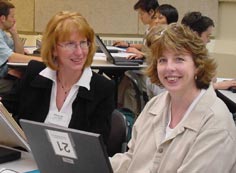 |
|
||||||||||||||||||||||||

|
Strategy 1: Building Background Building background represents a crucial phase in the preparation of a CBI curriculum unit/lesson. Building background refers to the importance of helping students activate their existing foundational knowledge (their background knowledge or schema ), as well as helping them connect it to their experience of the here and now, in order to prepare them for their content and language learning journey. This strategy is particularly important in CBI as the concepts related to content (be it related to culture, science, social studies, literature, etc.) are often as cognitively challenging as the acquisition of language itself. Cognitive psychologists have known for some time that individuals learn new information by relating it to what we already know (e.g., Anderson, Spiro & Montague, 1977; Bartlett, 1932; Piaget, 1954; Vygotsky, 1962). Prior knowledge and experience—and the ability to activate that knowledge/experience and relate it to incoming information—are the necessary tools for learning. The “building background” strategy is related
to schema
theory (e.g., Anderson, 1977; Spiro, 1977), a theory about knowledge
whose basic tenet posits that “written text, or spoken discourse,
does not carry meaning in and of itself. Rather, meaning occurs as a
result
of the interaction between the readers' or listeners' prior knowledge
about the world and the text or speech” (Chiang & Dunkel, 1992,
p. 350). Prior knowledge about the world and text or speech form what
is known as content schemata (individuals' networks of knowledge on
different topics readily available to be activated when necessary) and
rhetorical
schemata (individuals' knowledge of the structure and organization
of the discourse). Building background is to be partly understood as
activating
existing schemata in the mind of learners knowing that the activation
of these schemata will facilitate the processing of new information
by increasing the learners' ability to engage in hypothesis formation
and
to make predictions and inferences (Mendelsohn, 1994).
The CoBaLTT website provides many effective graphic organizers to facilitate background building such as the KWPL chart (What do I Know? What do I Want to know? What do I Predict? What have I Learned?) Ultimately, building background is a key strategy in CBI as it represents the first step toward creating meaningful content and language learning opportunities for students, which is arguably one of the most important goals of CBI.
References: Anderson, R. C. (1977). The notion of schemata and the educational enterprise: General discussion of the conference. In R. C. Anderson, R. J. Spiro, & W. E. Montague (Eds.) Schooling and the acquisition of knowledge (pp. 415-431). Hillsdale, NJ: Lawrence Erlbaum Associates, Publishers. Anderson, R. C., Spiro, R. J., & Montague, W. E. (Eds.) (1977). Schooling and the acquisition of knowledge. Hillsdale, NJ: Lawrence Erlbaum Associates, Publishers. Bartlett, F. C. (1932). Remembering. Cambridge, UK : Cambridge University Press. Chiang, C. S., & Dunkel, P. (1992). The effect of speech modification, prior knowledge and listening proficiency on EFL lecture learning. TESOL Quarterly, 26 (2), 345-374. As cited in: Mendelsohn, D. J. (1994). Learning to listen: A strategy based approach for the second language learner. San Diego, CA : Dominie Press, Inc. Echevarria, J., Vogt, M., & Short, D. (2004). Making content comprehensible for English learners: the SIOP model (2nd ed.). Pearson Education, Inc. Mendelsohn, D. J. (1994). Learning to listen: A strategy based approach for the second language learner. San Diego, CA : Dominie Press, Inc. Piaget, J. (1954). The construction of reality in the child. NY: Basic Books. Spiro, R. J. (1977). Remembering information from text: The “state of schema” approach. In R. C. Anderson, R. J. Spiro, & W. E. Montague (Eds.), Schooling and the acquisition of knowledge ( pp. 137-165). Hillsdale, NJ : Lawrence Erlbaum Associates, Publishers. Vygotsky, L. S. (1962). Thought and language. Cambridge, MA: MIT Press.
|
||||||||||||||||||||||||